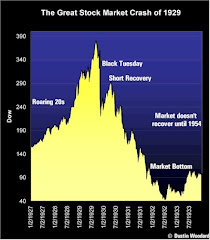
When I began to study pensions many years ago there were some concepts that I did not initially understand and were confusing but became clearer after I studied them in action.
Pension Types
In Canada there are two types of pensions. There are defined contribution plans and there are defined benefit plans.
The best description for the difference in these is the definitions given by Oxford Dictionary of pensions.
1) a regular payment made by a government to people above a specified age... or to such a person's surviving dependents - Public Sector pensions
2) a regular payment from a fund to which the recipient has contributed - private sector pensions - Private Sector pensions
Pension Income
With the defined contribution plan the retirement income determination of this plan is easy. Whatever you have accumulated in the plan at retirement you can draw down on for income. So as a basic example if, at retirement, you have $250,000 accumulated you could draw down $25,000 per year for 10 year. Of course we have an expectation that the fund will generate investment income and can pay more over our retirement.
Most Canadians have the contributory kind while those in the public sector have the defined benefit pensions. In my opinion defined benefit plans are not really pensions at all but a guaranteed income at retirement.
In the public sector the level of defined benefits or guaranteed retirement income is set at 70% of retirement income. The usual public sector formula is 2% of income per working year. Therefore the usual retirement is set for 35 year producing the 70% replacement income. Some pensions typically for police and firefighters are accelerated to allow for retirement after 30 years.
Currently the Federal government pays an average of over$80,000 per year to it's employees. The average employee therefore will earn a guaranteed income of $56,000 per year in retirement. These plans are "integrated" with CPP (Canada Pension Plan) which is around $10,000 per year. So the pension will pay $46,000 of this income with the CPP covering the rest.
In Ontario a teacher retires in the highest income group at over $90,000. Therefore they will receive a pension in excess of $60,000 per year.
Pension Provisions or Formulas
The public sector defined benefit plan is designed to pay 70% of income during retirement. In addition is offers.
Life time - It funds "income" for the life of the retiree
Indexing - It increases every year for life. Based on "inflation" which is set at some arbitrary number selected by government employees.
Survivor benefits - The surviving spouse of the retiree is guaranteed generally 60% of the income. This is regardless of whether or not they have other sources of income, including a public sector pension.
Trips - Free trips to Florida or Arizona every year (just joking)
Pension Boosting or Pension Spiking
Public sector pensions are a continuation of income into retirement years. The public sector pension attempts to replace 70% of the retirees income. Most formulas for pension income are based on an average of the past few years working income.
We saw recently the release of the Sunshine List in the Province of Ontario. This is the list of the employee who earned over $100,000. There was a fair amount of coverage in the press over those employees who made it to the list from jobs with a base rate much less than $100,000.
Since the retirement income is based on a percentage of working income the higher the final pay rate in the final years the higher the pension. Toronto Star reports on bus drivers in the Sunshine List These employees earning overtime have discovered that 70% of $100,000 is a much better pension than 70% of the $60,000 base rate. This is pension boosting.
Double Dipping
Public sector pensions have a much earlier retirement date than the private sector. Many public sector employees retire in their early 50's. Today the life expectancy has increased to over 80 years of age. Many of these "seniors" are able to continue working and I think should be able to continue working. Take the mayor of Mississauga for example, Hazel is a prime example of a very active, intelligent and capable 80 year old.
Public employees can trigger their pensions and find a new job. When they earn both pension and working income they are "Double Dipping". Report from the Toronto Sun
Taxpayer or Pension Liability
There is a common principle for all defined benefit pensions. Employees may make some contributions but the final liability of funding the pension is with the employer. The employer for public sector pensions is of course governments that are funded by taxpayer money. Ultimately all taxpayers are responsible for public sector pensions.
These numbers are very flexible and are manipulated based on the needs of the pensions at the time.
For example, this came from a Google search America's Intelligence Wire - Mar 21, 2006 - Last week, the Ontario Teachers Pension Plan announced it currently faces a $32-billion funding shortfall. Many factors contribute to the looming crisis . This was at a time when the pension saw an new government coming into power that was beholding to them and they wanted to leverage that IOU into more cash.
A year later the political opposition to large amounts of money being pumped into the plan started to rise. The plan then used it's magic and "The Ontario Teachers' Pension Plan is cutting back on inflation protection for some future retirees to eliminate a $12.7-billion funding shortfall reported" After a large injection of cash from Ontario taxpayers the shortfall estimates were changed.
Then this year after a disastrous year on the markets. It lost $19 Billion on the markets and it lost the return for the year. The expected returns on the $100 Billion plan should have been around 6% or another $6 Billion. The shortfall from previous years $12B, last year's losses $19B and the loss of income from last year $6B turned into.... ta da... are you ready for this....
"London Free Press - Apr 3, 2009 - Despite a $2.5-billion shortfall that will likely grow during the next four years, contributors to the Ontario Teachers"
Pension Dumping
Many companies in the private sector have found the burden of pensions unsustainable. In an attempt many companies have used whatever means available to escape from the liabilities of defined benefit pensions.
Many companies have looked for relief from their employees, union and to governments. As a last resort many companies have gone bankrupt.
Unfortunately this is not an option for public sector pensions. They can only dump onto the taxpayer.
Underfunded Pensions
An underfunded pension is one where the commitments to employees for future pension income is not sustainable based on the amount of money currently accumulated in the pension fund.



No comments:
Post a Comment